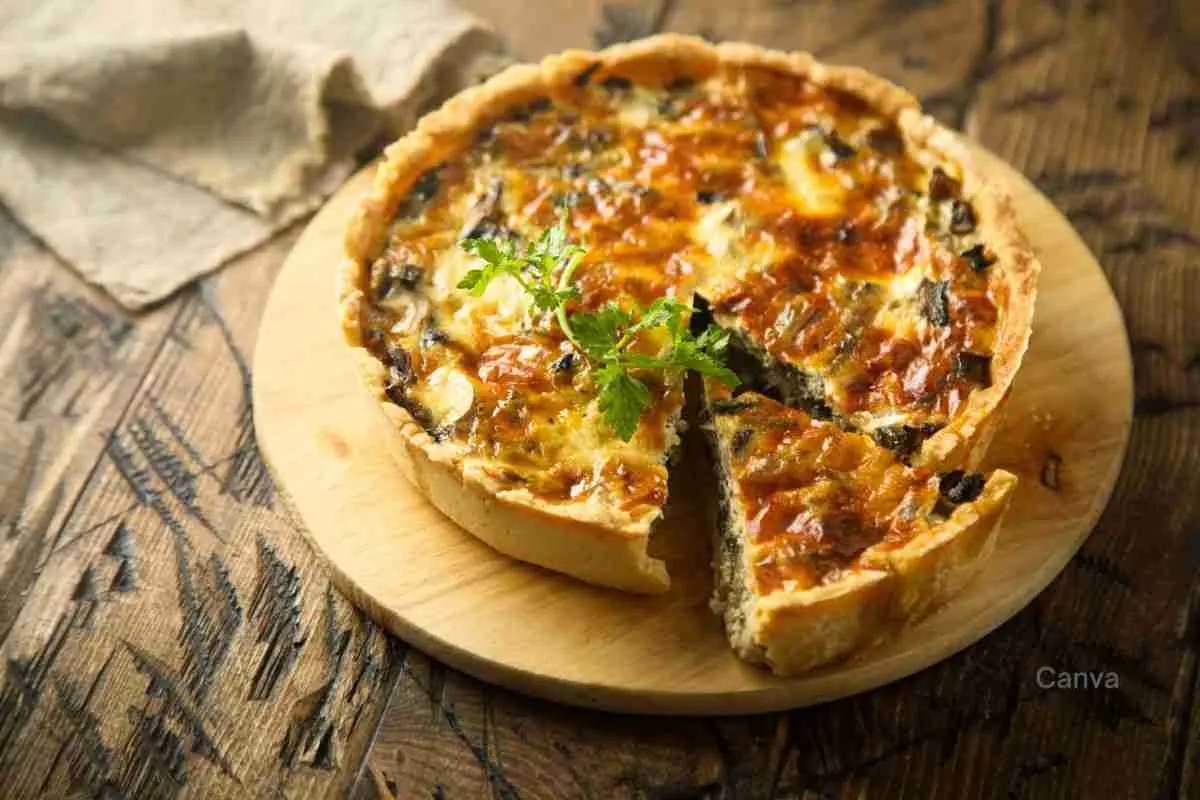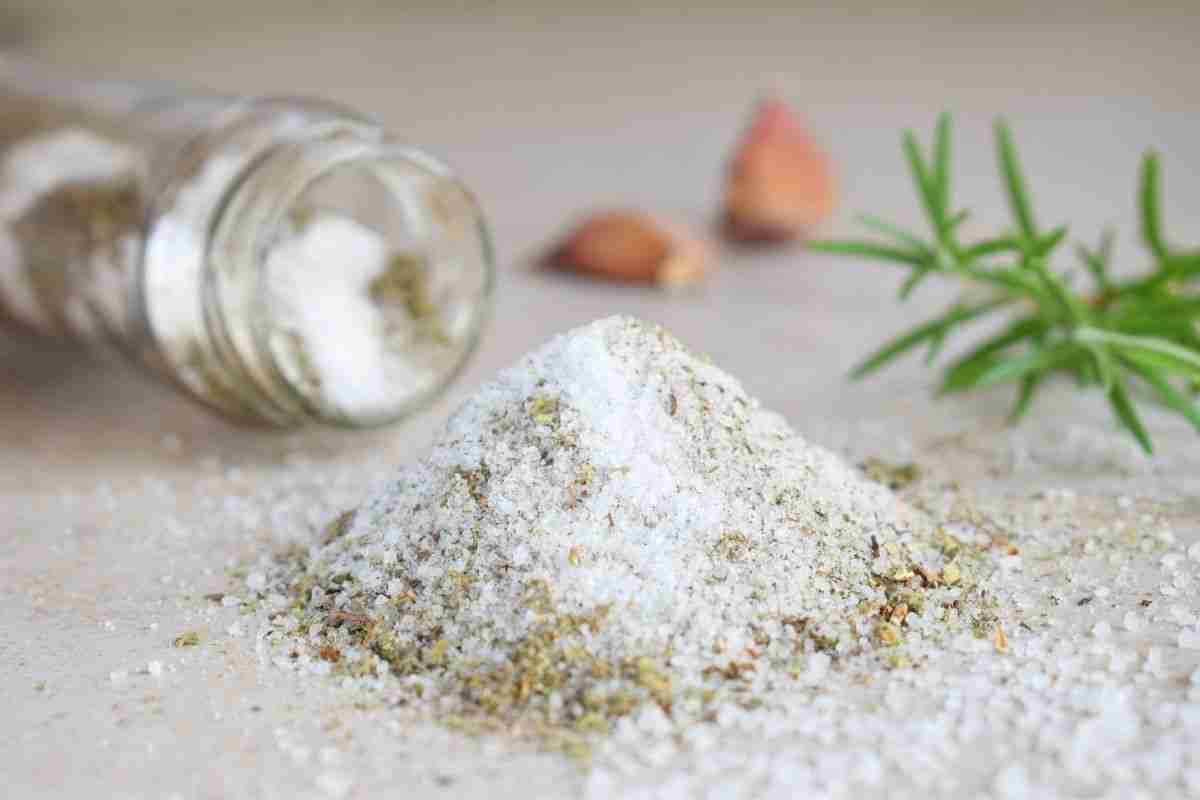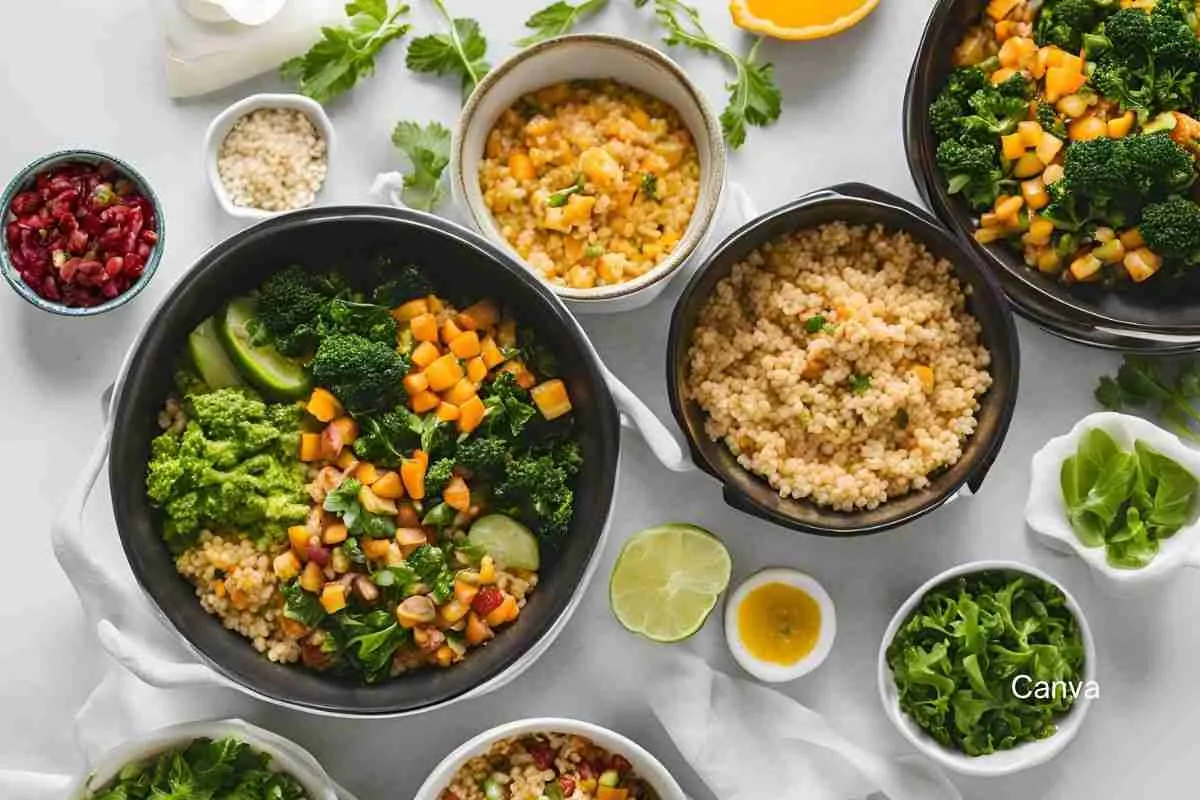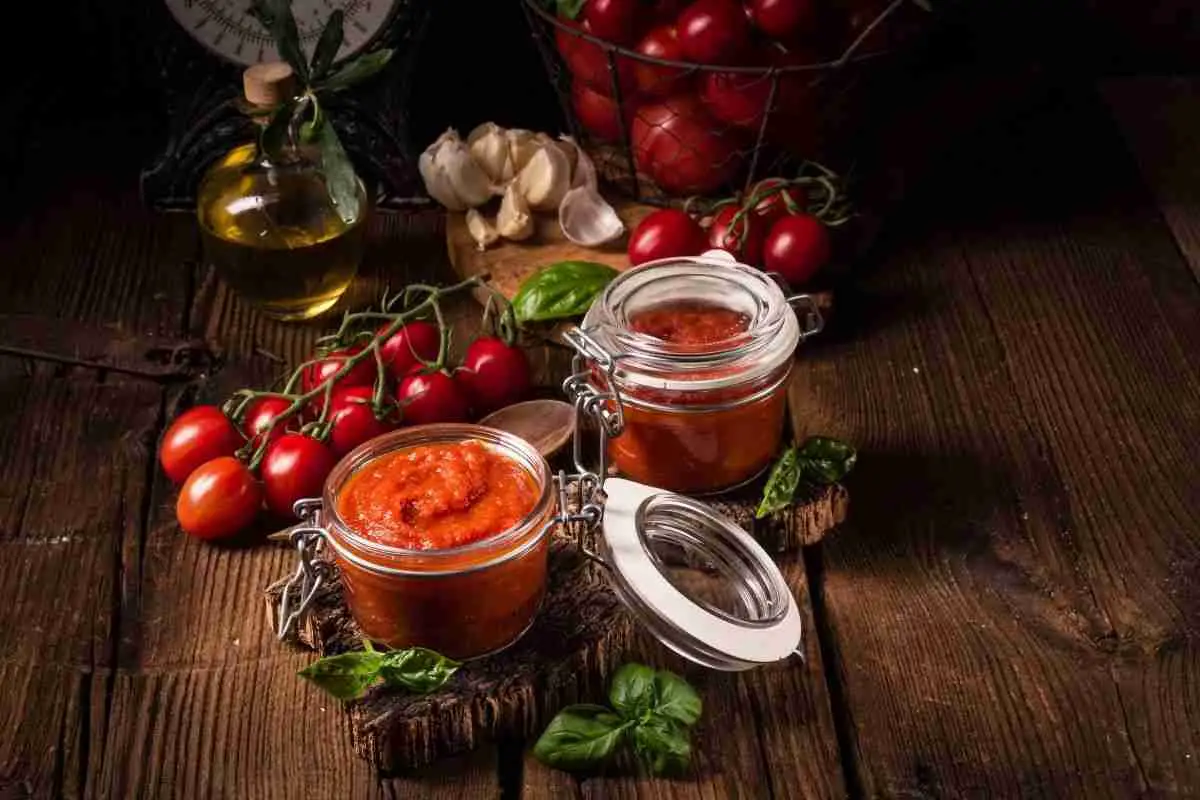Caribbean Curry Uncovered: Discover the Unique Flavors of Each Island
It is time to Step into the Vibrant World of Caribbean Curry. Caribbean curry is more than a dish—it’s a story. Every island has its own take on curry, blending local produce, spices, and centuries of cultural influences into flavorful meals that excite the senses. From the fiery scotch bonnet heat of Jamaican curries to the coconut-rich stews of Trinidad, each bowl reflects the heart and heritage of its people.
Whether you’re a seasoned cook or simply curious about Caribbean flavors, this guide will take you island-hopping through the world of curry, uncovering what makes each version unique.
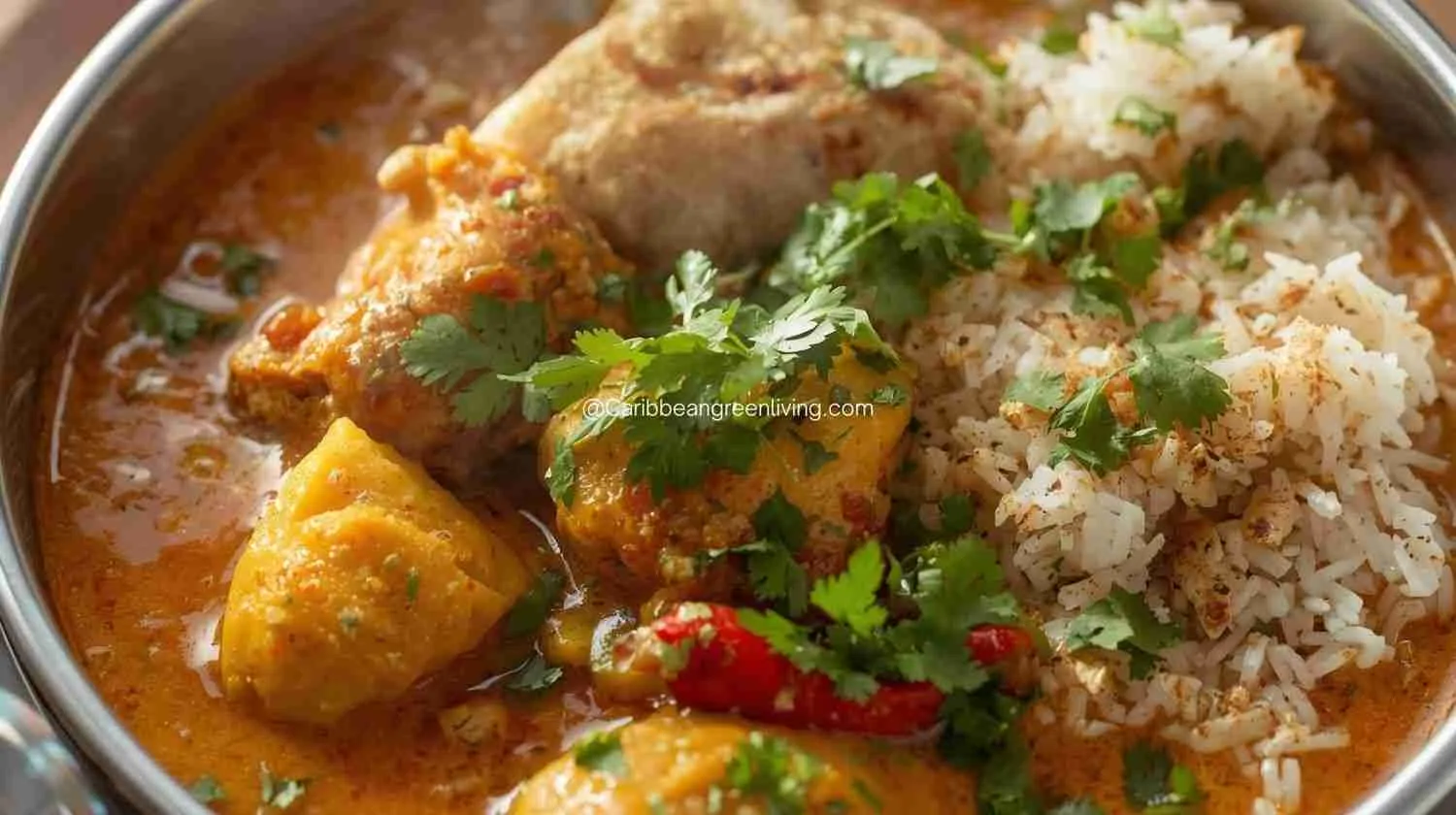
The Historical Influences Behind Caribbean Curry
The flavors of Caribbean curry are rooted in the region’s diverse history.
- Indigenous traditions: The Taino and Carib tribes contributed staples like cassava, chili peppers, and root vegetables.
- European settlers: Spanish, British, French, and Dutch colonizers introduced garlic, onions, meats, and preservation methods.
- African heritage: African slaves brought hearty stews, bold spice blends, and pepper-forward cooking.
- Indian laborers: In the 19th century, Indian indentured workers introduced curry spices and cooking techniques that transformed Caribbean kitchens.
- Chinese immigrants: They contributed additional layers of flavor, influencing seasoning methods and stir-fry techniques.
The result is a cuisine where history and culture merge beautifully on every plate.
Key Ingredients That Define Caribbean Curry
The soul of Caribbean curry lies in its spices and aromatics:
- Spices: turmeric, cumin, coriander, fenugreek, allspice, and mustard seeds
- Herbs: thyme, cilantro, parsley, green seasoning blends
- Heat: scotch bonnet peppers, chili peppers, fresh ginger, garlic
- Creaminess: coconut milk, balancing spice with sweetness
- Roots & Vegetables: potatoes, yams, carrots, bell peppers
- Local produce: mangoes, plantains, and seafood like shrimp and crab
This medley creates a flavor profile that is bold, aromatic, and unforgettable.

French Caribbean Curries: A Blend of Elegance and Spice
While Jamaican and Trinidadian curries often take the spotlight, the French Caribbean islands—including Haiti, Guadeloupe, and Martinique—offer their own refined take on curry dishes. Influenced by French culinary traditions and enriched with local ingredients, these curries often feature a delicate balance of spices, aromatics, and tropical flavors.
Haitian Curry Influence
In Haiti, curry-style dishes are often prepared with local seasonings such as epis (a green seasoning paste of herbs, peppers, and aromatics). While not traditionally called “curry,” Haitian stews and sauces embrace the same slow-simmering techniques and spice layering. The result is a dish that’s fragrant, comforting, and deeply flavorful, often paired with rice, plantains, or root vegetables.
Colombo Curry of Guadeloupe & Martinique
Perhaps the most famous French Caribbean curry is Colombo, a dish introduced by Indian indentured workers and adapted over generations. Colombo powder, a unique spice blend similar to curry powder, often includes turmeric, coriander, cumin, mustard seeds, and fenugreek.
- A classic version is Chicken Colombo, a comforting stew where chicken is simmered with Colombo powder, garlic, ginger, and root vegetables. Coconut milk or broth creates a silky sauce, while local produce like eggplant, carrots, or squash adds sweetness and depth.
Coconut Curries and Seafood Delights
Seafood plays a central role in French Caribbean cooking, with curry being a natural partner to fresh fish and shellfish.
- The dish Coconut Fish Curry (Samaki wa Nazi), though East African in origin, shares similarities with Caribbean seafood curries. Made with coconut milk, garlic, ginger, and peppers, it reflects how African and French influences blend seamlessly into the Caribbean table. In Guadeloupe and Martinique, similar coconut-based curries highlight local catches like snapper, crab, and shrimp.
Together, these dishes showcase how French culinary finesse, Indian spice traditions, and Caribbean ingredients merge into a rich, flavorful style of curry unique to the French-speaking islands.
Island-Specific Caribbean Curry Variations
Jamaican Curry: Bold & Spicy
Jamaican curry is defined by the fiery scotch bonnet pepper and the warm notes of allspice. Signature dishes include:
- Curry Goat – slow-cooked until tender, rich with coconut milk
- Curry Chicken – marinated with spices and green seasoning, then simmered with potatoes and carrots
Often paired with rice and peas or roti, Jamaican curries are hearty and satisfyingly spicy.
Trinidadian Curry: Complex & Aromatic
Trinidadian curries reflect a fusion of Indian and Creole traditions. Known for deep spice blends (coriander, cumin, fenugreek, mustard seeds), they also feature:
- Green Seasoning – a fresh herb mixture that brightens dishes
- Curry Chicken with Chickpeas – creamy, hearty, and served with dhalpuri roti or paratha
- Curry Shrimp – quick-cooked with bell peppers, tomatoes, and coconut milk
Guyanese Curry: Tradition Meets Innovation
Guyanese curries often combine potatoes, chickpeas, and coconut milk for depth and heartiness. Popular dishes include:
- Curry Chicken – marinated with garlic, ginger, and curry powder, then simmered until fragrant
- Curry Fish – fresh fish cooked with tomatoes and bell peppers, offering a lighter yet equally flavorful twist
Barbadian Curry: Sweet & Savory Balance
Barbadian (Bajan) curries stand out for their sweet-and-spicy contrasts. Local fruits like mangoes and plantains enhance the flavor. Favorites include:
- Curry Chicken with Mango – a tropical twist with tender chicken and sweet fruit notes
- Curry Shrimp with Plantains – creamy, colorful, and served with rice or roti
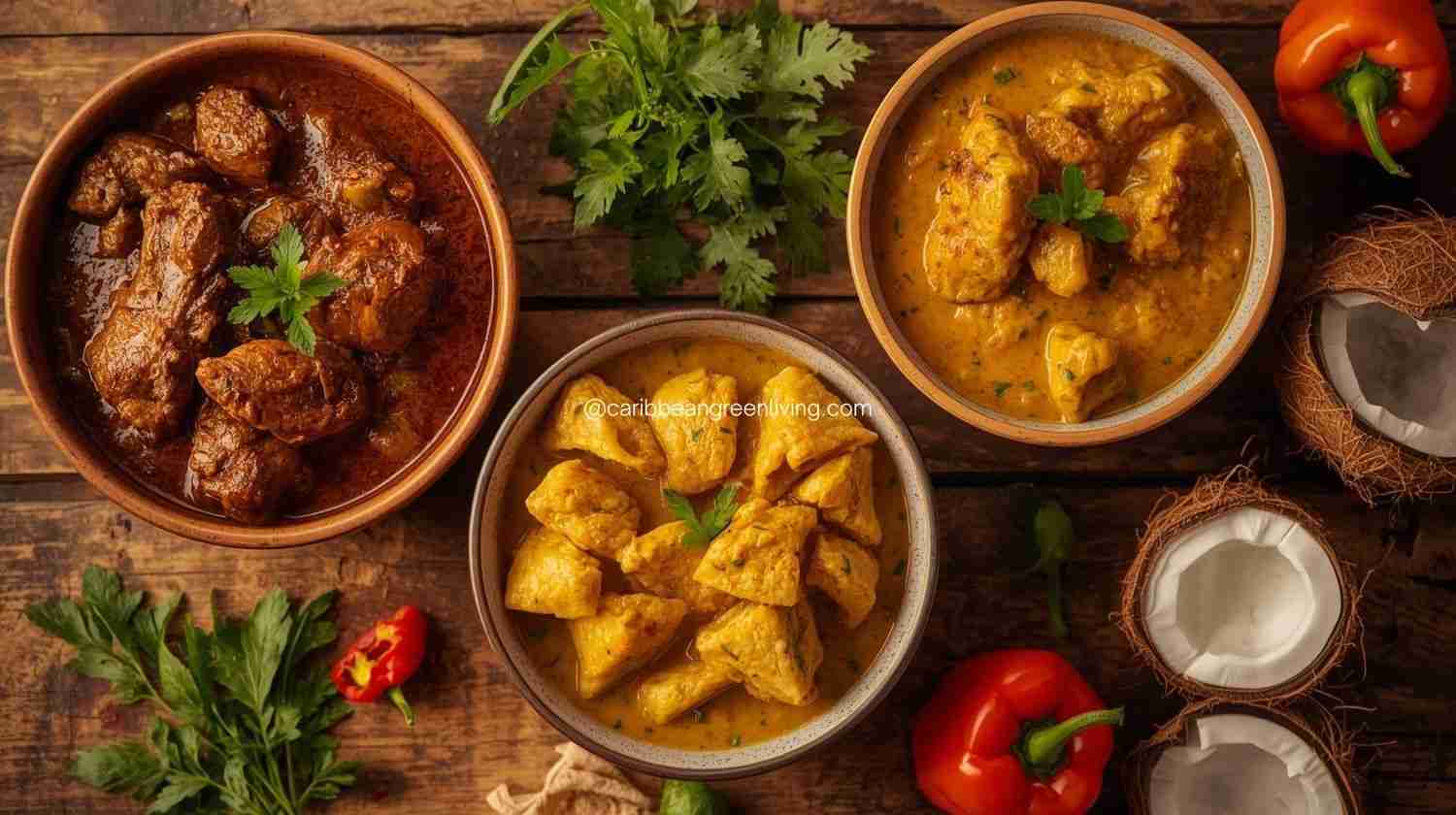
Cooking Techniques for Authentic Caribbean Curry
To capture the true essence of Caribbean curry, these techniques are key:
- Marinating: Infuses meat or seafood with spice blends and fresh herbs.
- Browning: Searing meat before simmering adds rich, caramelized depth.
- Slow Cooking: Ensures flavors meld beautifully, creating tender and flavorful dishes.
- Balancing Heat and Creaminess: Scotch bonnet peppers bring fire, while coconut milk cools and rounds out the flavors.
Embracing the Diversity of Caribbean Curry
Caribbean curry is a celebration of cultural fusion and local abundance. Each island tells its story through spices, cooking techniques, and the bounty of the land and sea.
From the spice-packed pots of Jamaica to the herb-rich curries of Trinidad, every version offers a taste of tradition and innovation.
So the next time you prepare or savor a Caribbean curry, remember—you’re not just enjoying a meal, you’re experiencing history, heritage, and the vibrant spirit of the islands.
Want to explore more Caribbean flavors? Browse our Caribbean recipes for dishes that bring the islands straight to your kitchen!
References
- Caribbean Green Living. Chicken Colombo Recipe.
- Caribbean Green Living. Coconut Fish Curry (Samaki wa Nazi).
- Caribbean Green Living. What is Epis and Why Every Caribbean Kitchen Needs It.
- Shepherd, Verene. Caribbean Foodways: Historical Roots of Caribbean Cuisine. University of the West Indies Press.
- Mintz, Sidney W. Caribbean Transformations. Aldine Publishing, 1974.


